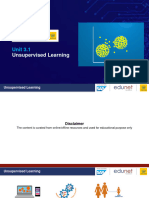0% found this document useful (0 votes)
17 views11 pagesUnsupervisedlearning
Unsupervised Learning is a machine learning approach that analyzes unlabeled data to discover patterns and structures. It primarily includes clustering and dimensionality reduction techniques, with popular algorithms like K-Means and PCA. Applications span various fields such as marketing, security, healthcare, and natural language processing.
Uploaded by
important9505Copyright
© © All Rights Reserved
We take content rights seriously. If you suspect this is your content, claim it here.
Available Formats
Download as PPTX, PDF, TXT or read online on Scribd
0% found this document useful (0 votes)
17 views11 pagesUnsupervisedlearning
Unsupervised Learning is a machine learning approach that analyzes unlabeled data to discover patterns and structures. It primarily includes clustering and dimensionality reduction techniques, with popular algorithms like K-Means and PCA. Applications span various fields such as marketing, security, healthcare, and natural language processing.
Uploaded by
important9505Copyright
© © All Rights Reserved
We take content rights seriously. If you suspect this is your content, claim it here.
Available Formats
Download as PPTX, PDF, TXT or read online on Scribd
/ 11

























































